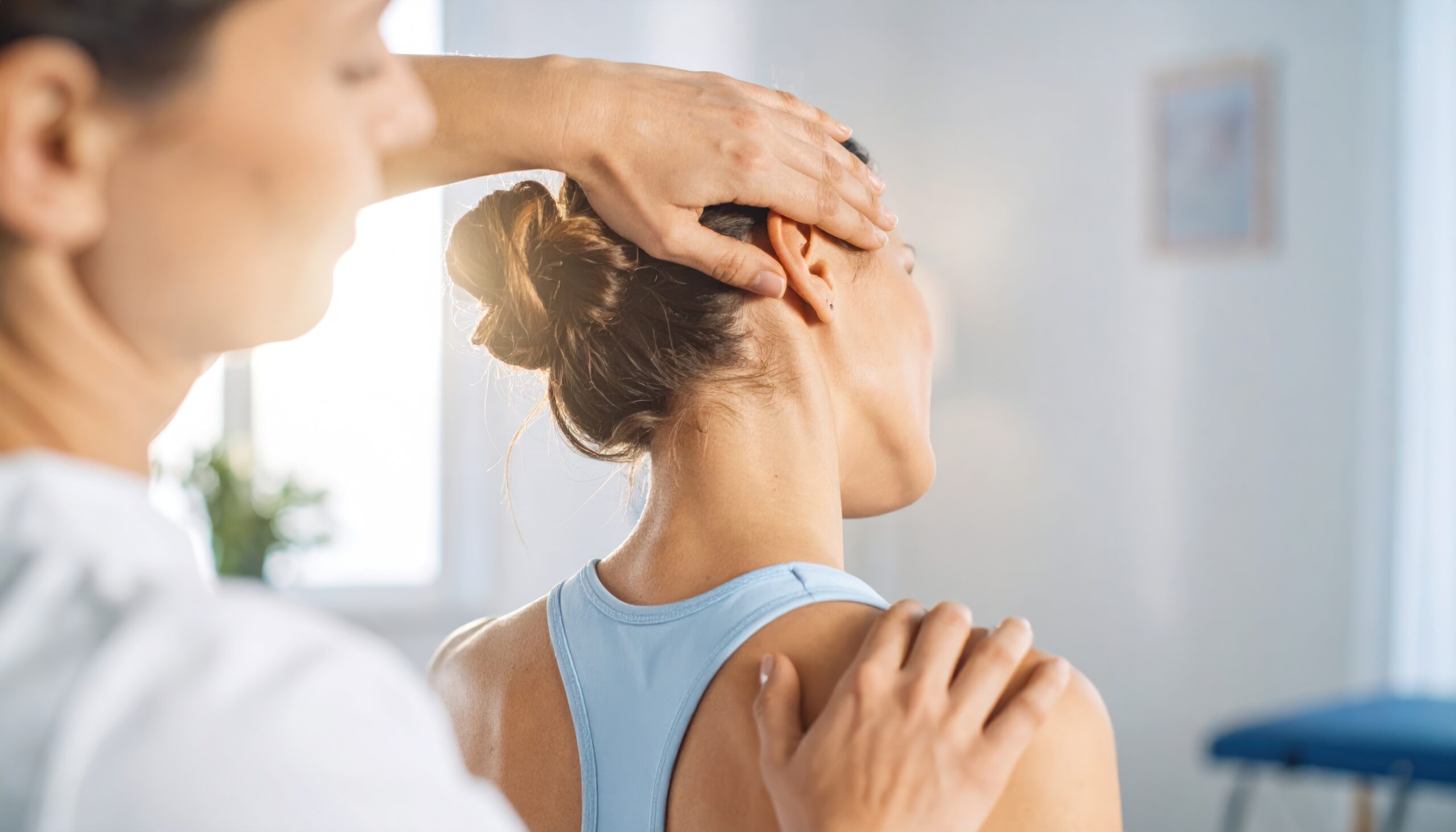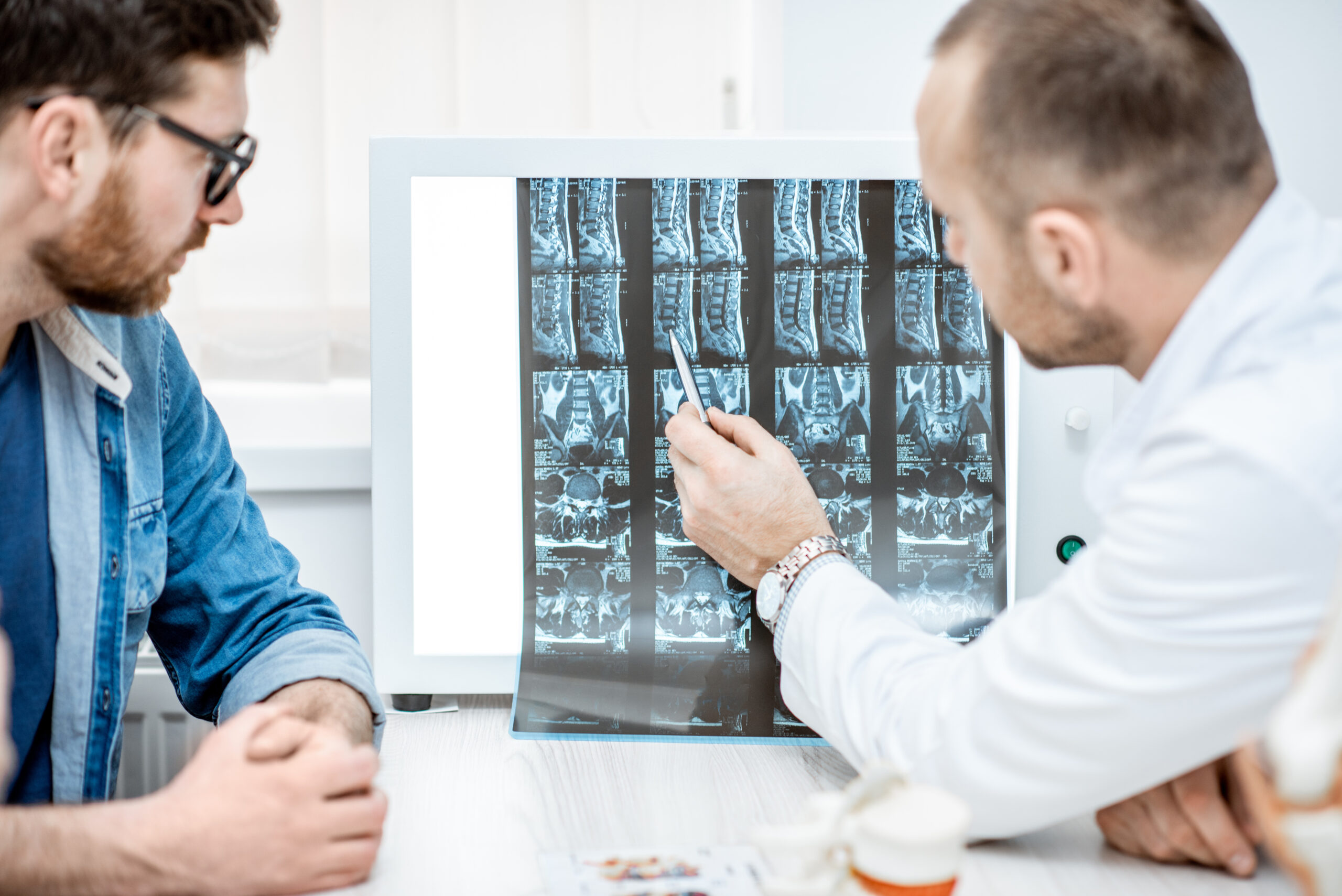
A herniated disc occurs when the squishy filling inside your spinal disc (nucleus pulposus) pushes through the outer wall (annulus fibrosis). This can be caused by unexpected trauma or through the natural wear and tear of aging on your body.
Herniated discs often heal on their own, but, in severe cases, they may require surgical intervention. Patients who experience back pain should see a doctor if they suspect they have a herniated disc so they can follow a treatment plan and recommendations to promote healthy healing.
Dr. Todd H. Lanman, an award-winning spinal surgeon and founder of the ADR Spine Top Doctors program, frequently meets with patients with herniated discs. He does everything he can to avoid surgical intervention by guiding them through non-invasive treatment plans. Even though he is one of the most experienced spinal surgeons in the United States, Dr. Lanman sees the value of non-invasive methods.
Here are a few do’s and don’ts that Dr. Lanman walks his patients through if they are diagnosed with a herniated disc. These steps promote good spinal health and empower the body to heal.
The Do’s: Practices to Adopt for Herniated Disc Relief
1. Do Maintain a Healthy Weight
Excess weight puts pressure on your body and can strain your spine. Patients who are obese are 35% more likely to experience severe or intense back pain. Because weight is often unevenly distributed around the body, it can cause the spine to bend. This is particularly true in patients who carry extra weight on their front, who might find themselves bending over more often. Dr. Lanman has seen the biomechanics of patients improve after weight loss, reducing the risk of developing damaged or herniated discs.
The CDC offers several guidelines to assist with achieving and maintaining a healthy weight. This includes practicing portion control, increasing water intake, and implementing low-impact exercises like swimming. Talk to your doctor to identify healthy weight loss goals.
2. Do Engage in Approved Physical Activities
Patients with herniated discs often avoid physical activity because they don’t want to aggravate the injury. However, moving your body can loosen your muscles and improve your back. Dr. Lanman recommends low-impact exercises like walking, swimming, and cycling.
If you are worried that any exercise might be painful, start small. Walk around your neighborhood or swim a few laps at your local gym. From there, you can move on to longer and more intense exercises.
Your core muscles support your spine, so exercising your body can promote back health long after your herniated disc heals.
3. Do Use Proper Lifting Techniques
Lifting is a part of everyday life, whether you are picking up your child or bringing your groceries inside. Proper lifting technique is important for anyone but is essential if you have a herniated disc. Dr. Lanman has seen patients worsen their spinal conditions because of improper lifting, which delays the healing process.
The main thing to remember is to lift with your knees, versus your arms and back. It is healthier for your spine to crouch down and then stand up with good posture. Here is a useful guide to illustrate lifting best practices.
It is possible to go to the gym and lift weights if you have a herniated disc; however, keep your form in mind. Proper lifting can support your muscles while unsafe lifting will exacerbate your injury.
4. Do Apply Heat or Cold Therapy
Both hot and cold therapy provide value to patients who are recovering from a herniated disc. The key is to know why you should use different temperatures and how they affect your body. Dr. Lanman recommends starting with cold therapy. This reduces the inflammation that makes your back feel sensitive. After you treat the inflammation, you can use heat therapy to relax your muscles. When your spine is damaged, your muscles are forced to work harder to support your body, which can make them sore.
When practicing hot and cold therapy, take steps to protect your skin. Never apply ice directly to your body and instead wrap an ice pack in a cloth. You should also avoid using heat at extreme temperatures.
5. Do Optimize Your Workspace for Back Health
You might be surprised how much your office chair can impact your back and neck pain. Excessive slouching puts pressure on the spine and can worsen herniated disc symptoms. Here are a few steps Dr. Lanman recommends to optimize your workspace for back health:
- Keep your monitor at eye level. Your gaze should fall at the center of the screen so you aren’t looking up or down throughout the day.
- Place your feet flat on the floor. Avoid crossing your legs while you work.
- Allow your arms to rest comfortably. You should not feel like they are elevated while you work.
- Press your butt and back against the chair. Make sure you feel supported as you work throughout the day.
If you work from home, avoid setting up your office at the kitchen table or on your living room sofa. Invest in a dedicated office space that supports your spinal health.
The Don’ts: Habits to Avoid with Herniated Disc
1. Don’t Ignore the Pain
Pain is a warning sign from your body that something is wrong. One of the worst things you can do is ignore pain and hope that it goes away. While many herniated discs will heal on their own, it is still important to confirm this diagnosis with your doctor and review your treatment options.
Ignoring pain can cause it to get worse. Pain is your body telling you to pay attention to what is causing your discomfort, or that it has become more severe. Early intervention is helpful, because, as your condition worsens, your treatment options can become more limited and more invasive.
For example, if you seek medical treatment for moderate back pain, Dr. Lanman may recommend hot and cold therapy and medication to treat inflammation. If you seek help when the pain is severe, your condition might have progressed to the point where you need surgery.
It is better to visit your doctor for a minor issue than to wait for it to become a major one.
2. Don’t Participate in High-Impact Sports
High-impact sports are more likely to damage your body, especially if you are healing from a herniated disc. Examples of high-impact sports include running, karate, team sports like football and basketball, boxing, and even skiing. The good news is that there are plenty of lower-impact sports you can participate in if you have a herniated disc. For example, instead of running you can try cycling or swimming.
Dr. Lanman has found that high-impact sports pose a significant risk to patients, especially those with existing spinal conditions.
3. Don’t Sit for Long Periods Without Breaks
While setting up an ergonomic desk can help with spinal support, you also want to avoid sitting for long periods. Too often, office workers sit down early in the morning and don’t get up again until lunchtime or when they need a coffee refill. Make an effort to take breaks and move your body during that time – setting reminders on your phone or calendar can help.
Moving around during the day can promote blood flow and provide opportunities for you to use your muscles. Dr. Lanman frequently meets with patients who live sedentary lifestyles because of office work. They often experience higher levels of back pain than more active people their age.
4. Don’t Smoke
Several studies have proven correlations between smoking and degenerative disc health. Not only does smoking reduce the strength of your spinal discs, but it can reduce your ability to heal from a herniation effectively.
Research also shows that smokers have significantly worse outcomes if they need to undergo spinal surgery. Dr. Lanman urges all of his patients to stop smoking to protect their spinal health and increase their chances of a full recovery.
Both the CDC and the American Lung Association offer trusted resources you can turn to to help you with the smoking cessation process.
5. Don’t Skip Regular Medical Follow-ups
After you leave Dr. Lanman’s office, he will likely schedule follow-up appointments to check on your herniated disc. He wants to confirm that your herniation is healing and approve you to resume high-impact activities. Even if you feel that your body is healing and are happy with your recovery, do not miss these follow-up appointments. Dr. Lanman may identify complications or issues to look out for.
While you can’t rush your recovery, you can address your pain symptoms early, giving you the maximum options available and ensuring your condition doesn’t worsen.
Take Control of Your Herniated Disc Pain: Act Now!
Many of the steps patients take to heal herniated discs can become healthy habits that they will embrace for decades. Eating right, starting to exercise, stopping smoking, and setting up an ergonomic workstation can protect your spine and other parts of your body as you age. Not only will your herniation feel better, but your body and mind will grow strong as well.
After your herniated disc is healed, continue to meet with Dr. Lanman to protect your spinal health. He can develop personalized treatment plans to protect your spinal discs with a focus on building healthy daily routines.
If you experience back pain, even at a moderate level, request a consultation with Dr. Lanman today. He can put you on the path to good spinal health.
Ready to reclaim your life? Get in touch with Dr. Lanman Today.
FOLLOW US ON SOCIAL MEDIA | @ADRSPINE




